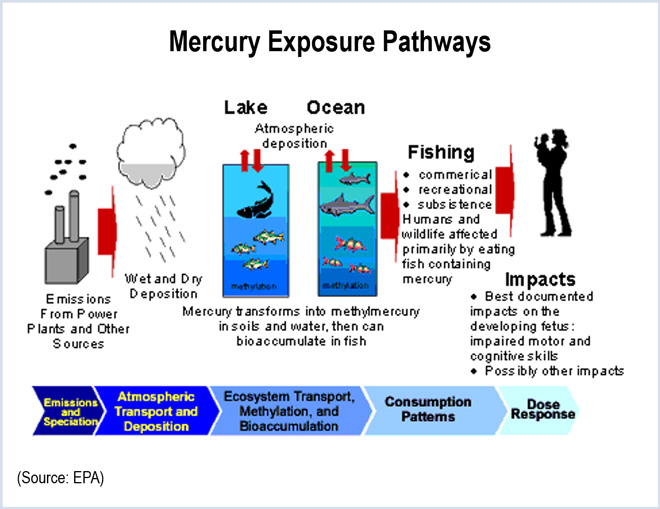
Congress amended the act to give the Environmental Protection Agency the authority to regulate 189 hazardous air pollutants (HAPS), including mercury, arsenic and cadmium that had not been previously controlled.
The law, signed by President George H.W. Bush, required EPA to develop emission standards for the pollutants, and then identify, categorize and regulate the sources that emitted them in large amounts.
The act expressly forbade EPA from considering cost when deciding whether to regulate sources other than electric generating plants; cost would only come into play in setting the level of regulation.
Other provisions of the 1990 amendments specifically targeted power plants, including the acid rain program, which required regulations on sulfur dioxide (SO2) and nitrogen oxide (NOx) emissions from the largest coal-fired generators.
Appropriate and Necessary
Congress ordered EPA to perform a study evaluating whether the acid rain and other programs had addressed all public health concerns from generators. It ordered EPA to develop additional regulations if the agency determined it was “appropriate and necessary.”
EPA submitted the required utility study in 1998, concluding that the acid rain program would not significantly reduce HAPS emissions. In 2000, EPA announced it would regulate mercury, other metals and acid gases, noting that power plants were the biggest source of mercury emissions in the U.S.
EPA said mercury is a health hazard because it enters the food stream through fish and shellfish. Mercury can impair neurological development for fetuses, infants and children.
Reversal by Bush Administration
In 2005, however, the George W. Bush administration attempted to withdraw the listing, a decision that was voided by the D.C. Circuit Court of Appeals. The court said the government hadn’t met the criteria for delisting.
The Obama administration reaffirmed the decision to regulate mercury in 2012, saying it was necessary because other Clean Air Act regulations would not eliminate the health hazards posed. EPA said it interpreted Congress’ instructions in section 112 of the act as prohibiting the consideration of cost when it made the “necessary and appropriate” determination.
The MATS rulemaking sparked numerous challenges. While all parties agreed that section 112 was silent on the issue of costs, they disagreed on how that silence should be interpreted.
Last April, the D.C. Circuit upheld the MATS rulemaking in a 2-1 decision, with Judge Judith Rogers writing that section 112 “neither requires EPA to consider costs nor prohibits EPA from doing so.”
Judge Brett Kavanagh provided the ammunition for challengers to appeal to the Supreme Court, writing that the term “appropriate” required a cost-benefit consideration.
